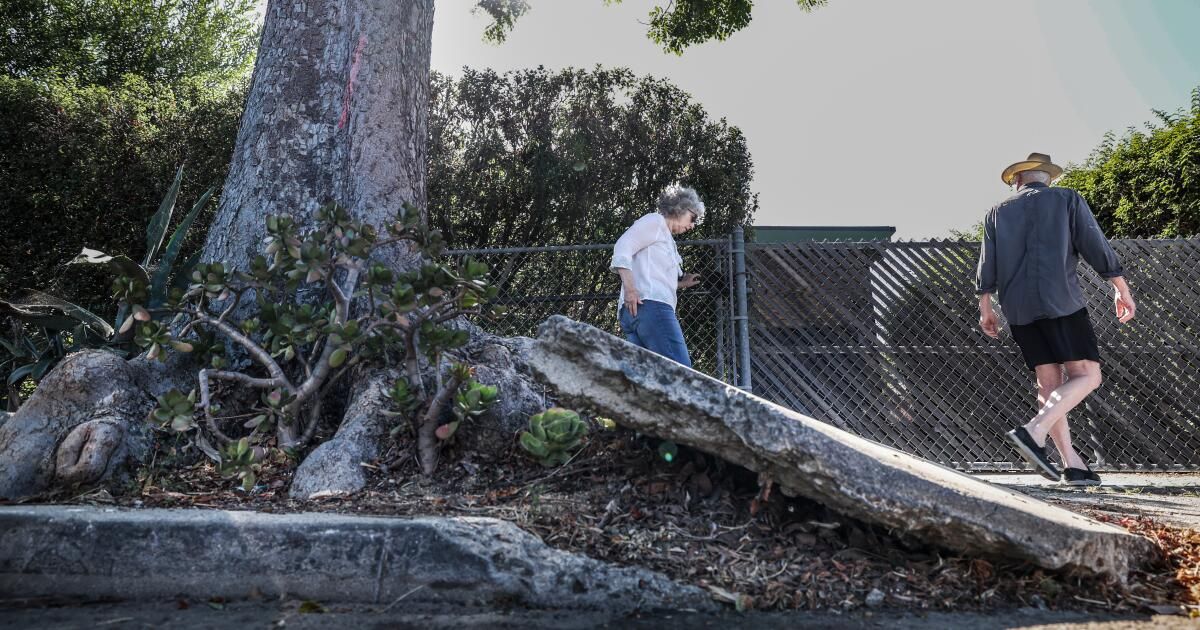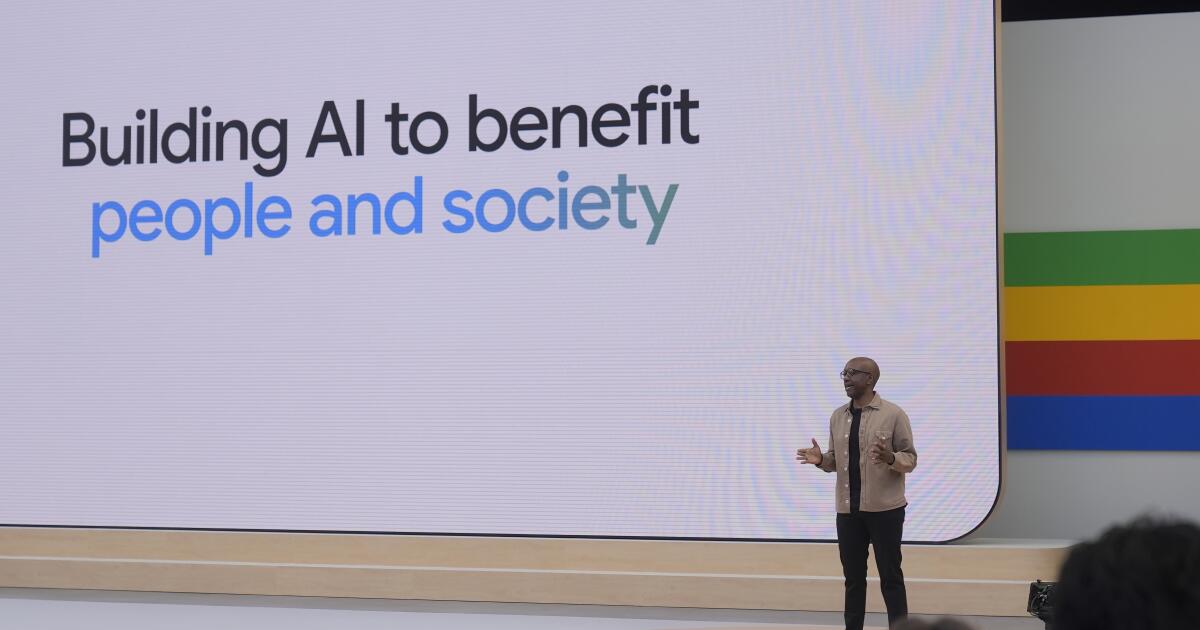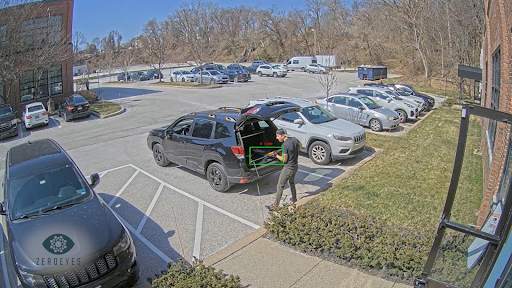You might think of Venice as a flat neighborhood with beachfront promenades and walkable boulevards lined with shops, but that doesn't take into account the mountain ranges with sidewalks scattered throughout the area.
Dennis Hathaway, 81, and his wife Laura Silagi, 78, were walking their dog Marlowe recently when Silagi came upon one of those ridges and tripped on the uneven pavement and fell hard.
“I fell to my knees,” Silagi told me at the scene on Nowita Place near Lincoln Boulevard.
There are much worse breakups on that same street, but they are obvious, and Silagi, an artist and photographer, said that sometimes it is the minor dangers that kill you.
California is about to be hit by a wave of aging, and Steve Lopez is taking advantage of it. His column focuses on the advantages and disadvantages of advancing age, and how some people are challenging the stigma associated with older adults.
“I turned around and thought, 'Oh no,'” said Hathaway, who saw his wife fall face downward onto the pavement, drawing blood.
As we discussed Silagi's accident, neighbor Liz Laffin chimed in to say that her father fell on this very street about four years ago, when he was 75.
“His forehead was split open,” he said. “He was bleeding profusely.”
Is there any neighborhood in Los Angeles that doesn't have outrageously cracked, sunken and raised sidewalks? Not that I know of, and it's been that way for decades. Good luck if you have vision or balance problems, or if you use a cane or wheelchair, or if you push a stroller.
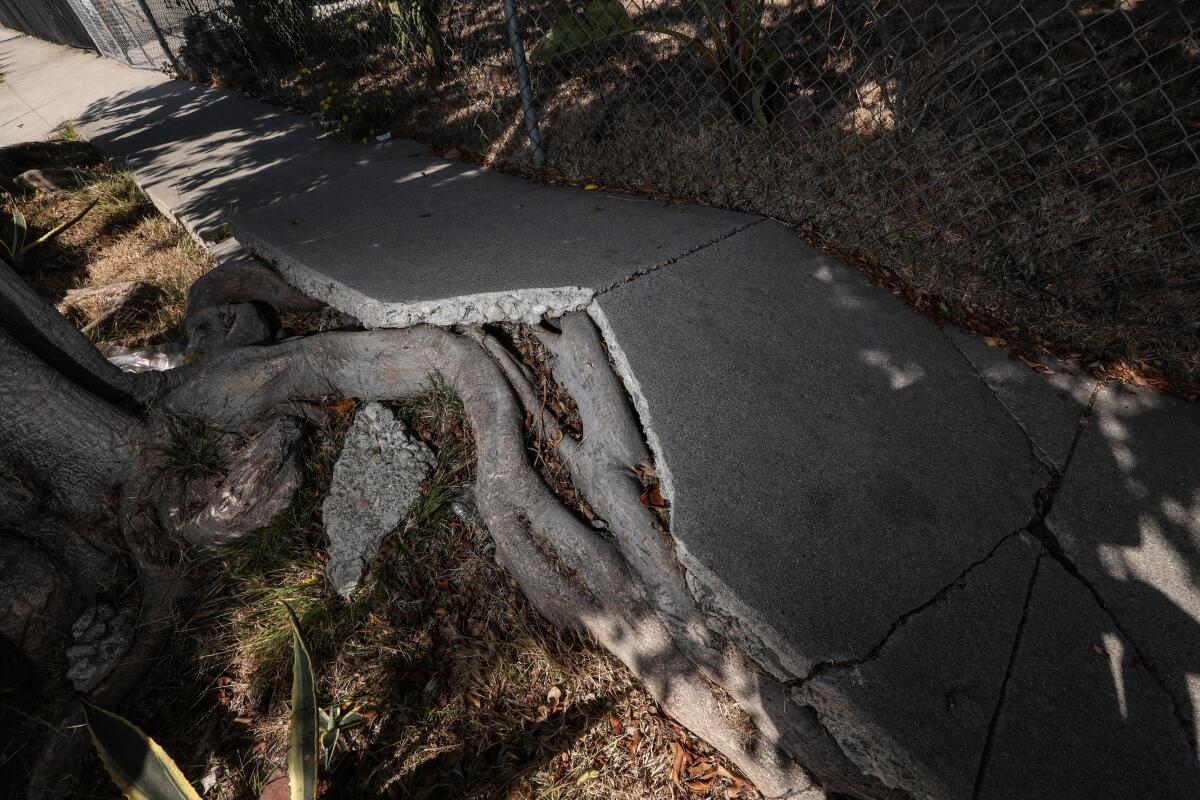
A badly damaged sidewalk slab at Nowita Place in Venice.
(Robert Gauthier/Los Angeles Times)
Hathaway, who writes a blog called An Octogenerian's Journal, had emailed me to suggest that, with more and more older people trying to keep fit by walking, I should take another look at the sorry state of the city's sidewalks, which I first wrote about a decade ago. It's a good idea, especially since Los Angeles Mayor Karen Bass is pushing for a car-heavy Olympics in 2028, meaning many people would have to walk to and from bus and train stations.
So I did some digging and learned two things: little has changed in the past decade, and the way Los Angeles handles this issue is as flawed as the sidewalks themselves.
Three years ago, according to an audit by then-City Comptroller Ron Galperin, the backlog of sidewalk repair requests was about 50,000. But there is no long-term plan to carry out those repairs, and even if there were, the work would take years and cost hundreds of millions of dollars.
If not for the settlement of a lawsuit against the city on behalf of disabled people who could not use sidewalks due to impassable pavement or lack of ramps, there would have been virtually no progress. But even those solutions have moved slowly, with several thousand jobs on hold, and a 2023 City Council memo saying that “the wait time may exceed 10 years.”
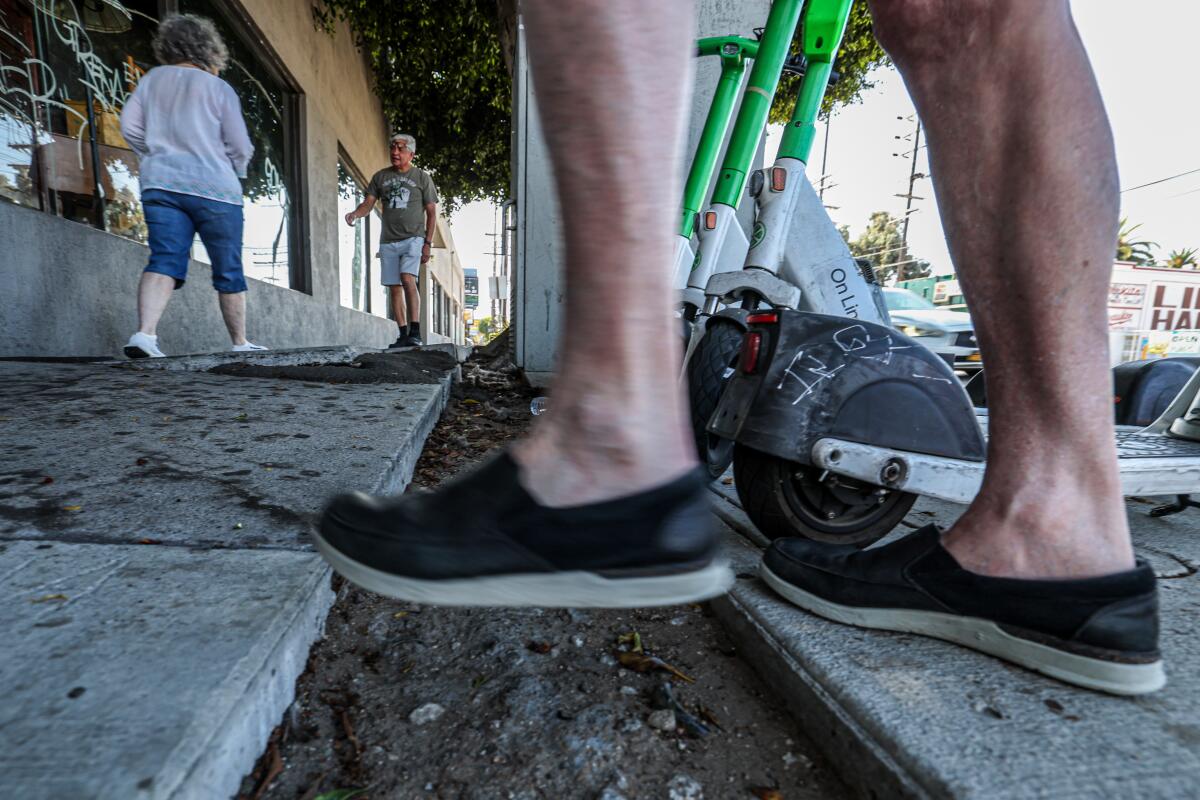
The city of Los Angeles is paying a small fortune to settle lawsuits related to sidewalk injuries.
(Robert Gauthier/Los Angeles Times)
Meanwhile, the city is paying a small fortune to settle lawsuits related to sidewalk injuries. Galperin’s report estimates that the cost of more than 1,000 lawsuits between 2020 and 2023 will amount to more than $35 million.
“It's outrageous every time we spend money to pay for an injury claim when we could have fixed the sidewalk,” said Councilwoman Traci Park, who represents Venice and told me that broken sidewalks top the list of the top five complaints to her office.
Park said attention to basic problems has been compromised by the enormous cost of time and resources that have been spent on addressing homelessness. That's true to a certain extent, but the sorry state of sidewalks predates the dramatic rise in homeless numbers.
After my walk through the peaks and valleys of Venice, I took a tour of the broken sidewalks of Koreatown with John Yi, a candidate for state Assembly and former director of the nonprofit advocacy group Los Angeles Walks.
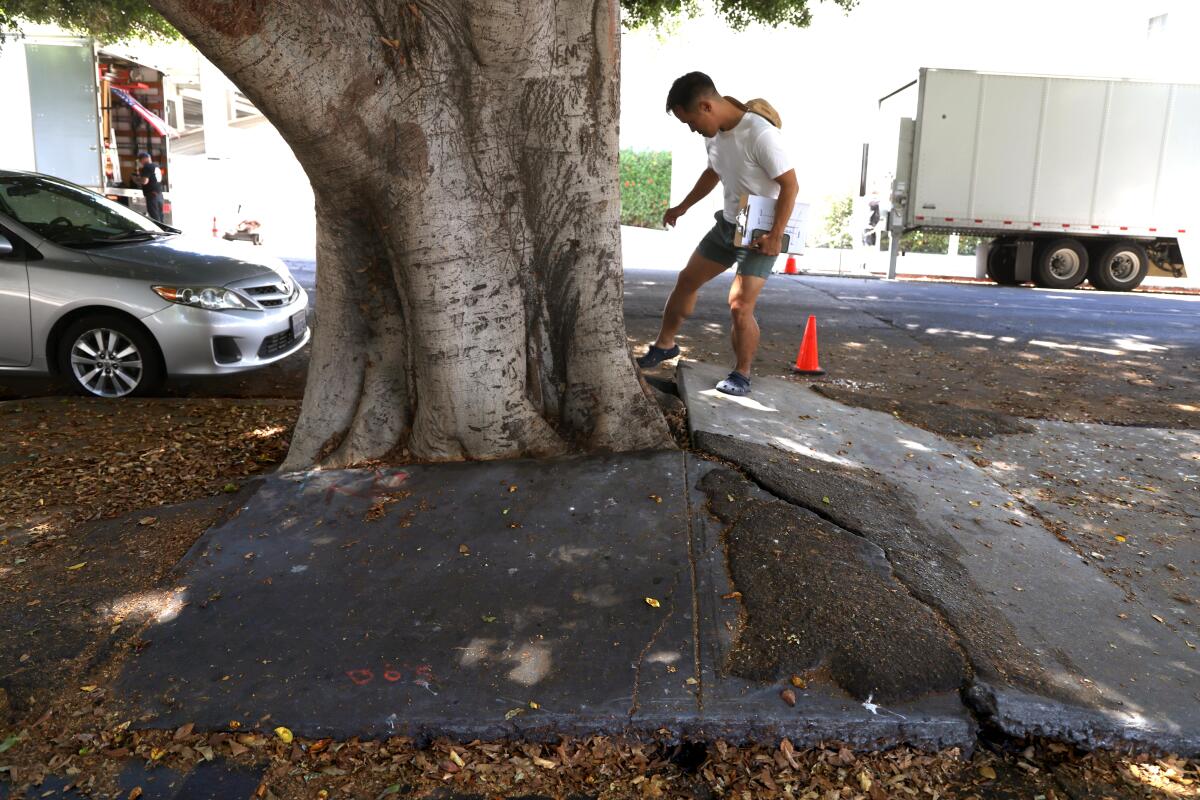
John Yi, 38, former executive director of the nonprofit pedestrian advocacy group Los Angeles Walks, looks at a sidewalk that was damaged by tree roots along South Oxford Avenue in his Koreatown neighborhood.
(Genaro Molina / Los Angeles Times)
“We have the resources and we know how to make sidewalks good. We don’t have the political priority,” Yi said as we walked past a homeless person lying on the sidewalk near 7th and Wilshire.
At Manhattan Place, the sidewalks were cracked and upturned and trash was strewn everywhere, as if we were in a mini landfill. An abandoned mattress was propped up against a tree, with a nightstand nearby. A resident called out to us from the window of a second-floor apartment, asking if we were there to do something with the trash.
No, we said, we were inspecting broken sidewalks.
“The sidewalks are disgusting,” he replied.
For years, the city has opted for shoddy stopgap solutions, using asphalt to fill cracks and crevices the way frosting is used to hide a crumbling cake. At Western, we stumbled upon an example of how that can go wrong. An asphalt slab that had been used to cover sidewalk damage caused by unmaintained tree roots had become embedded in the trunk and lifted up at a sharp angle.
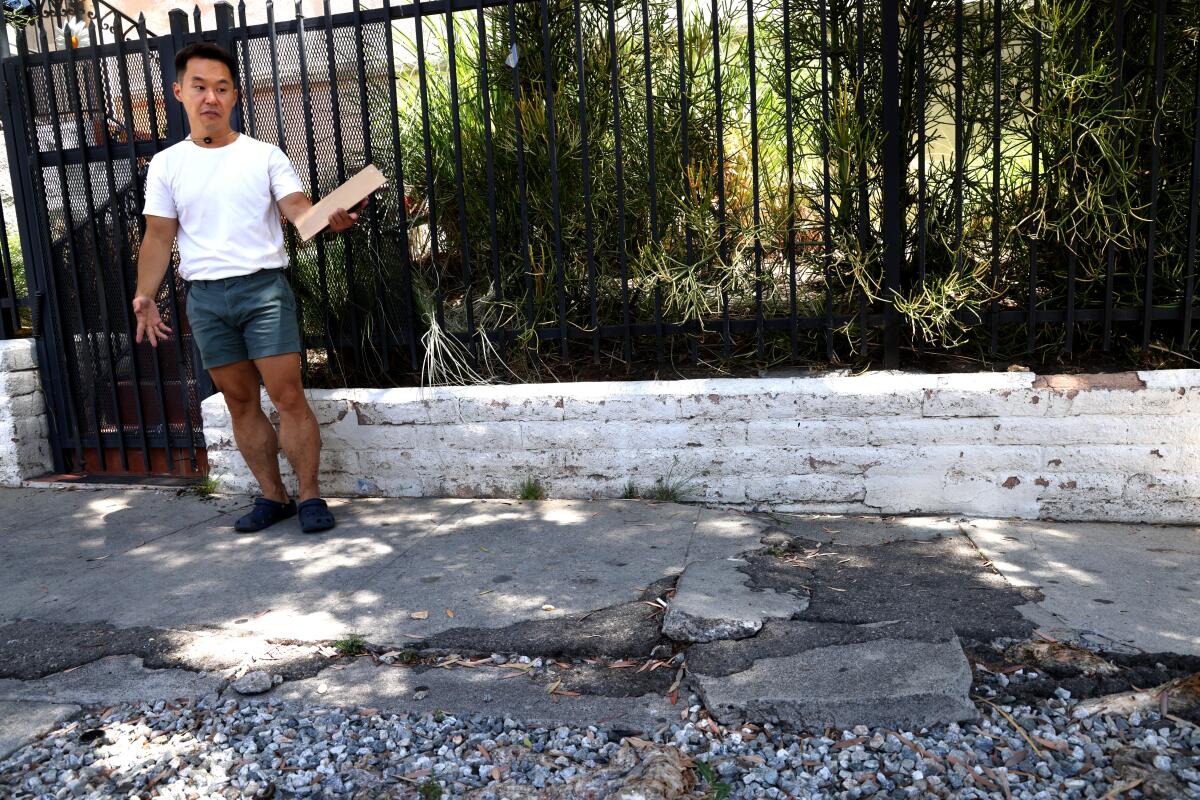
“We have the resources and we know how to make the sidewalks look good. We don’t have the political priority,” says John Yi.
(Genaro Molina / Los Angeles Times)
It was a uniquely Los Angeles sculpture: a real-time, evolving monument to municipal dysfunction. “We’re so used to this kind of decay that it’s somehow become an L.A. vibe,” Yi said. “You become conditioned to say this is normal.”
On nearby Oxford Avenue, the shallow roots of a ficus tree (the city’s lack of tree maintenance is the leading cause of sidewalk disruption) have virtually destroyed a 12-foot stretch of sidewalk, raising it a foot or more above street level at its highest point. It occurred to me that by 2028, Los Angeles should dispense with the skate park and allow Olympic athletes to compete on the city’s thousands of miles of sidewalk ramps and canyons.
As Yi and I examined the damaged sidewalk in Oxford, two retired LAPD officers working security at a nearby movie set came over to tell us that day and night, rats the size of beavers were crawling in and out of the caves created by the uneven, raised concrete slabs.
Jessica Meaney of Investing in Place, a nonprofit that focuses on quality of life issues, summed it up clearly:
“We have not made any progress and the city has been delaying the implementation of any significant programs to improve its sidewalks,” Meaney said. “Los Angeles is the only major city that does not have a capital infrastructure plan… I think Los Angeles and Mayor Bass really need to reconcile the lack of leadership and a citywide vision for our sidewalks and our public spaces.”
In Venice, Hathaway and Silagi told me they haven’t bothered to report their worst stretches of sidewalk, one of which resembles a model of the Santa Monica Mountains. “I’ve never seen anyone fixing a sidewalk in all this time,” said Hathaway, who has lived in the same house since 1986. She brought up the problem when she was a member of the Neighborhood Council more than 20 years ago, she said, “but no one seemed very interested.”
Park called the issue “totally unacceptable.” He said City Hall has discussed finding ways to speed up the process and he hopes the added pressure of the upcoming Olympics will provide encouragement.
It's not as if a two-week sporting event with visitors from around the world needs to be held in four years' time for city officials to take care of the basics on behalf of locals.

John Yi, looking at a patch of broken sidewalks in his Koreatown neighborhood, said, “You become conditioned to say this is normal.”
(Genaro Molina / Los Angeles Times)
If you want to keep the pressure on City Hall, send me stories and photos of Olympic-level breaks in your neighborhood. I'll look into getting a three-tiered podium with raised sidewalks for the awards ceremony.
Keep in mind that the competition is sure to be tough. I'll see if I can convince Snoop Dogg to award the gold, silver and bronze medals.

